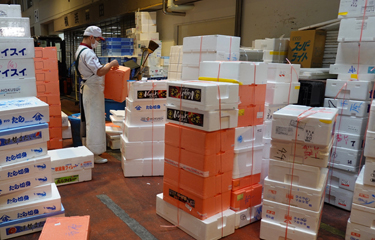Japan’s seafood exports rose in 2021, reflecting recovery in China and US

Japan’s seafood exports recovered in 2021, and in some cases surpassed pre-pandemic levels, trade statistics from Japan’s Ministry of Finance show.
The recovery is in line with the government’s announcement in December 2021 that the annual value of Japan's agriculture, forestry, and fisheries exports for the year would exceed JPY 1 trillion (USD 8.7 billion, EUR 7.7 billion) for the first time. That figure was achieved through substantial increases in shipments of beef to the U.S. and sake to China, and included such diverse items as whiskey, wood, and pearls.
When that dataset is limited to fish, crustaceans, mollusks, and other aquatic invertebrates (Chapter 3 of the Harmonized Schedule of Tariffs) the data shows recovery from the effects of the pandemic, and even a surpassing of pre-pandemic levels.
Japan’s exports in this category (which includes a small quantity of ornamental fish and hatchery seedlings) in 2021 were valued at JPY 202.77 billion (USD 1.75 billion, EUR 1.54 billion) up 39 percent from the previous year, 21 percent from 2019, and 15 percent from 2018.
In the categories of fish preparations (HS codes 16.03 and 16.04), which cover such items as roes and pastes, the exports for 2021 totaled JPY 65.05 billion (USD 560 million, EUR 500 million) and the year-on-year data show a similar trend of recovery from 2020, though the pre-pandemic level was not reached.
The shipped value in 2021 was up 10 percent from JPY 59.10 billion (USD 510 million, EUR 450 million) in 2020, but still 9 percent down from JPY 68.67 billion (USD 590 million, EUR 520 million) in 2019 and 12 percent off of the 2018 value of JPY 73.69 billion (USD 630 million, EUR 560 million).
Japan’s main seafood exports are scallops, mackerel, yellowtail, tuna, and processed sea cucumber. Shipments to Japan’s major export markets of China, Hong Kong, and the U.S. increased, and China surpassed Hong Kong as the top destination for Japan’s seafood, with scallops contributing strongly.
Among the various seafood items exported, exports of scallops rose by 104 percent. The increase is on top of increased unit prices thanks to the recovery of demand for eating out in China and the U.S. and the impact of a decrease in production in the United States.
Frozen seriola (yellowtail/buri) shipments gained 43 percent, also attributed to the recovery of foodservice demand in the United States. That volume was mostly frozen fillets.
Among prepared seafoods, prepared sea cucumbers export values fell 14 percent, due to less demand from Hong Kong. The adductor muscles of scallops (usually dried) also had less demand from Hong Kong, partially due to large shipments in the previous year, leaving inventory levels high.
Photo courtesy of HAPIN/Shutterstock






Share